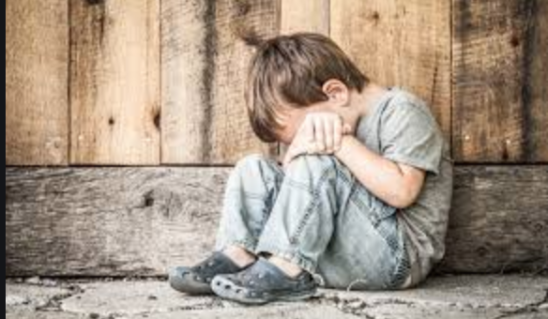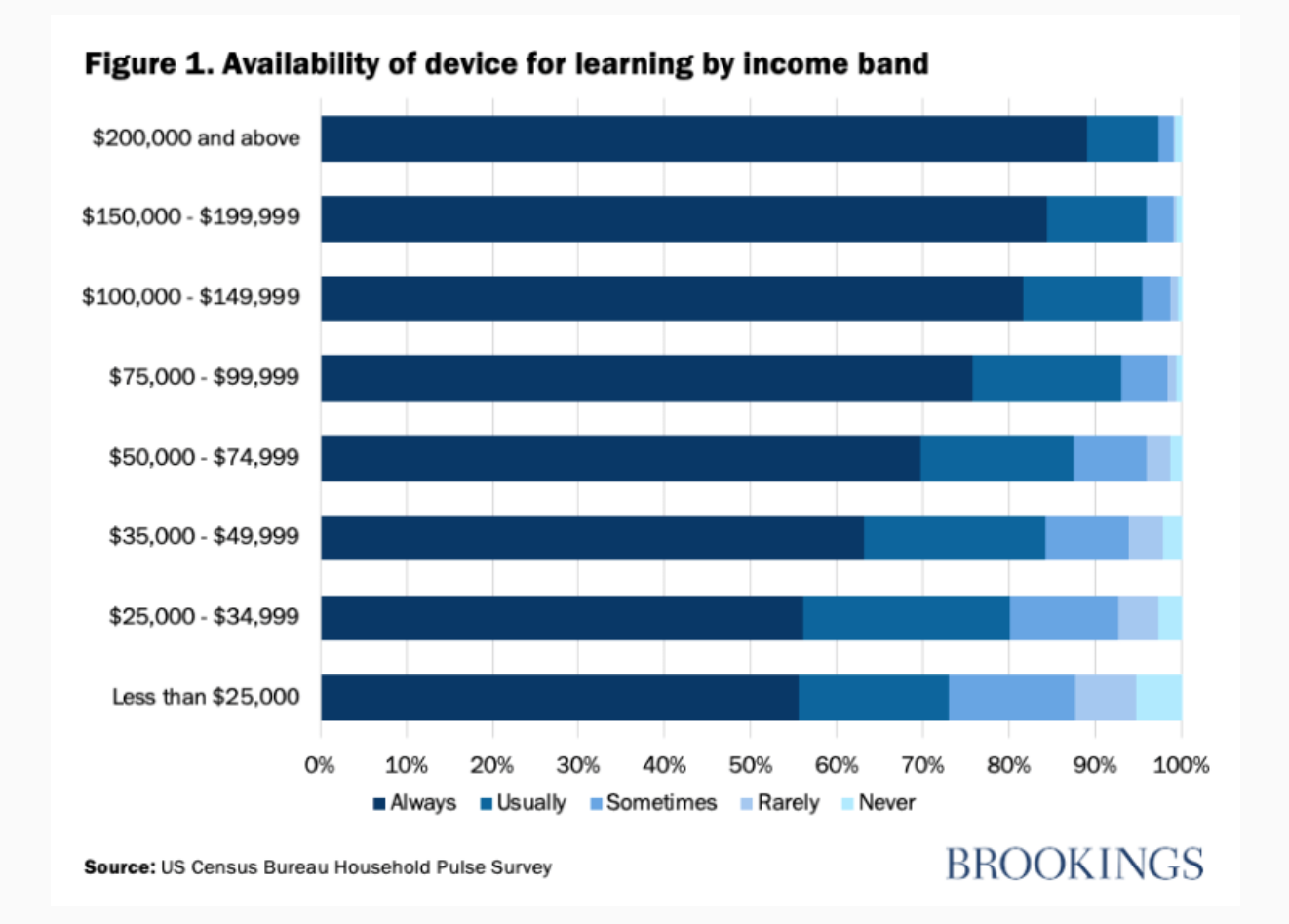
Collis, V. and Vegas, E. (2020) Unequally disconnected: access to online learning in the US Brookings Institute Education plus Development, June 22
This blog post is based on another study pointing out that poor people are less likely to have access to the digital equipment needed to study online. The post is based on a new weekly survey Household Pulse from the U.S. Census Bureau.
Main findings

- Around 1 in 10 of the poorest children in the U.S. has little or no access to technology for learning. It is interesting to note that lack of equipment (tablets, computers) was a higher barrier than lack of access to the Internet. Poorest children is defined as families with incomes of less than US$25,000 per annum
- Poor children living in poor states are even more likely to be at a disadvantage. The survey showed significant differences between states in how this affected families with the lowest incomes
- Fully 26.5 percent of children living in homes where there is often not enough food to go around—more than 1 in 4—are rarely or never able to get online to learn.
- 9.5 percent of respondents across the U.S. who did not finish high school say there is rarely or never a device available for learning in their home, compared with just 1.2 percent of those with a bachelor’s degree or higher qualification.
- Children’s access to online learning is strongly correlated with race. 8.7 percent of Black respondents say their children rarely or never have access to a device for learning, four percentage points higher than for the full sample including all races.
Main recommendations
The report makes these recommendations:
First, extra support will be critical for students whose family circumstances have made it difficult or impossible to continue learning during the pandemic. This means supporting teachers with tools to diagnose students as well as with the materials and pedagogical approaches to serve the learning needs of what is certain to be an even wider range of student skills.
Second, it will be important to plan for further periods where children need to learn from home for public health reasons, or where it may not be possible to have all students in classes and maintain appropriate social distancing. Some communities may need to adopt policies such as giving preferential access to school-based learning for the most disadvantaged, since more privileged students will be better equipped to study online. It also means designing and resourcing initiatives to improve poor children’s access to technology, either through equipment loan programs, capital investment in better internet access in relevant neighborhoods, or both.
Whether measured by income, location, parental education, or race, the relationship between privilege and access to the basic tools for distance learning is strong according to these data. Policymakers must take decisive steps to prevent the learning gap widening and damaging further the lives of children who are already at a significant disadvantage compared with their peers.
My comments
First there are some important differences between Canada and the USA. The latter has a wider Gini co-efficient of inequality (0.49) compared to Canada (0.32, when tax systems are taken into account). Nevertheless, it is likely that the same groups in Canada, plus Indigenous communities, suffer the same difficulties in accessing digital equipment and the Internet, although the absolute numbers will be smaller in Canada.
However, the fact that poverty means some students will be disadvantaged in accessing online learning is insufficient reason to deny all students access to online learning in an emergency.
Although it is necessary to take actions to ensure more online learning access to poor families, such as loans of tablets, the long-term solution is to reduce poverty in the first place. No child can learn well on an empty stomach, online or in class. It is poverty that is the problem, not unequal access to equipment or the Internet, which is most often a consequence of poverty. In the meantime, all policy makers should pay attention to these recommendations from the Brooking Institute.









 Dr. Tony Bates is the author of eleven books in the field of online learning and distance education. He has provided consulting services specializing in training in the planning and management of online learning and distance education, working with over 40 organizations in 25 countries. Tony is a Research Associate with Contact North | Contact Nord, Ontario’s Distance Education & Training Network.
Dr. Tony Bates is the author of eleven books in the field of online learning and distance education. He has provided consulting services specializing in training in the planning and management of online learning and distance education, working with over 40 organizations in 25 countries. Tony is a Research Associate with Contact North | Contact Nord, Ontario’s Distance Education & Training Network.

